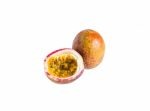One fruit that is not that well known in the West is the Ceylon Gooseberry or Ketembilla (Dovyalis hebecarpa, Warb; Family: Salicaceae) and yet it could offer the product developer a rich source of food colour for various applications. The fruit is native to Sri Lanka and most of Southern India but has started to be grown in Southern California and in Brazil (Morton, 1987).
In terms of cultivation, it has a wide fruiting season and would cover the sparse harvesting season for fruits in Winter. It is currently available for use as a raw fruit, in beverages, jams and confectionary. Its main benefit is the rich and intense purple colour it produces (Taylor et al., 2006) as well as having an intense yellow pulp due to the presence of carotenes fruit (de Rosso and Mercadante, 2007). There is a more robust natural cross available known as the Florida Gooseberry which is a hybrid of D. abyssinica Warb and D. hebecarpa Warb. This hybrid produces round fruits of 2–3 cm in diameter with a dark red-purple skin, and orange pulp and high levels of ascorbic acid (102–140 mg/100g).
There is still a great deal of research needed to identify its nutritional potential as well as the opportunities it presents to product developers. Its worth accessing the Purdue University’s Horticulture web-site as this link provides an extremely comprehensive description of the fruit.
https://www.hort.purdue.edu/newcrop/morton/ketembilla_ars.html
References
De Rosso, V.V., Mercadante, A.Z. (2007) HPLC-PDA-MS/MS of anthocyanins and carotenoids from dovyalis and tamarillo fruits. J. Agric. Food Chem. 55 pp. 9135–41.
Morton, J.F. (1987) Fruits from warm climates – Ketembilla. Miami.
Taylor, P., Baldo, A., Martins, G. (2006) Physical and Chemical Characterization of Dovyalis Fruits. doi:10.1300/J492v05n04

I would like to grow these. Please provide cultivation instructions.